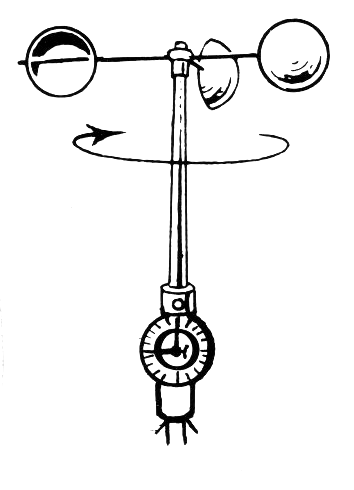The Function of an Anemometer in Improving Safety for Outdoor Activities
The Function of an Anemometer in Improving Safety for Outdoor Activities
Blog Article
All You Required to Understand About Anemometers: Exactly How They Work, Why They Matter, and Where to Make use of Them
Anemometers, however often forgotten in the realm of scientific instruments, play a vital role in various fields, providing valuable understandings into wind rate and air movement patterns. As we dig into the complexities of anemometer technology, we will uncover the inner functions of these gadgets, their value, and the crucial considerations when selecting the right anemometer for certain applications.

Anemometer Essentials
An important instrument utilized to determine wind speed and direction, the anemometer plays an essential function in meteorology and various markets. An anemometer usually is composed of three or 4 cups that revolve in the wind, a vane that aims right into the wind, and sensing units to track the rotations or motions.
There are different kinds of anemometers offered, consisting of mug anemometers, vane anemometers, hot-wire anemometers, and sonic anemometers, each with its unique functions and applications. Cup anemometers are generally made use of for standard wind rate measurements, while vane anemometers are preferred for directional measurements.
Principles of Anemometer Operation
Structure on the foundational understanding of anemometer fundamentals, the concepts of anemometer procedure elucidate the technicians behind wind rate and direction dimensions. Mug anemometers, for instance, have 3 or more mugs that capture the wind, triggering them to spin faster as the wind speed boosts. Hot-wire anemometers rely on a heated cord that cools down as wind passes over it, with the rate of cooling figuring out the wind speed.
Importance of Anemometers
Anemometers play a critical function in measuring wind rate and instructions, providing important data for weather forecasting, climate research studies, ecological monitoring, and air travel operations. Meteorologists depend on anemometers to collect precise wind data, helping them recognize weather condition patterns, forecast storms, and concern timely cautions to the public. Wind farm operators use anemometers to evaluate wind problems and make best use of electrical energy production from wind generators.
Applications Across Various Industries
Applications of anemometers extend across varied industries, showcasing their versatility and energy beyond meteorology. In the renewable energy market, anemometers play an essential duty in analyzing wind conditions for wind ranch placements, making certain optimum power production. Industries like building and mining utilize anemometers to check wind speeds, crucial for safety protocols, specifically when operating at heights or in open-pit mines where solid winds can pose threats. Anemometers are additionally check that indispensable in the aviation market, assisting pilots in comprehending airspeed and wind instructions for safe take-offs and touchdowns. The maritime market take advantage of anemometers for ship navigating, aiding sailors expect climate changes and adjust routes accordingly. In farming, anemometers aid farmers in taking care of crop spraying by providing real-time data on wind speed to prevent drift. Anemometers locate applications in Cooling and heating systems to maximize air movement and enhance energy efficiency in buildings. The varied use situations of anemometers emphasize their importance across various sectors, highlighting their important duty in enhancing operational safety and efficiency (anemometer).

Picking the Right Anemometer for Your Demands
Choosing the suitable anemometer customized to your particular requirements is essential for acquiring precise wind rate and instructions measurements. When choosing an anemometer, think about elements such as the intended application, needed dimension array, ecological problems, and preferred attributes. For basic functions, a cup anemometer appropriates for determining wind rate, while a vane anemometer offers wind direction information. Hot-wire anemometers are ideal for reduced airspeed measurements, and ultrasonic anemometers supply high accuracy and toughness.

Final Thought
In conclusion, anemometers play a crucial function in measuring wind rate and direction across various markets. Recognizing the principles of anemometer procedure is important for choosing the best device for specific needs. From see this site weather forecasting to air travel, anemometers are essential tools for collecting accurate data and guaranteeing security in different applications. When choosing the most suitable gadget for measuring wind conditions., it is vital to think about the significance of anemometers in order to make enlightened choices.
There are various types of anemometers offered, consisting of mug anemometers, vane anemometers, hot-wire anemometers, and sonic anemometers, each with its one-of-a-kind features and applications. Mug anemometers are commonly made use of for standard wind rate measurements, while vane anemometers are favored for directional published here dimensions. Hot-wire anemometers are appropriate for low airspeeds, and sonic anemometers are perfect for high-precision measurements in research and industrial setups.Structure on the fundamental understanding of anemometer essentials, the principles of anemometer procedure elucidate the mechanics behind wind rate and direction measurements. For general purposes, a cup anemometer is suitable for measuring wind speed, while a vane anemometer provides wind direction information.
Report this page